
Meet Snake-Leaved Medusa Succulents
This excellent info on medusoid euphorbias is from "Spiny Succulents: Euphorbias, Cacti, and Other Sculptural Succulents," by renowned nurseryman Jeff Moore, owner of Solana Succulents near San Diego. I highly recommend this new book for its excellent overviews, photos and readability. Jeff owns the copyright on the following excerpted photos and text, used here with his permission and my gratitude. -- Debra Lee Baldwin

Euphorbia flanaganii in bloom. Note the central Fibonacci spiral.
https://mountaincrestgardens.com/euphorbia-flanaganii-medusa-head-large/?aff=19
Medusoid euphorbias, by Jeff Moore
"Nicknamed 'medusoid' for their Medusa-like halo of snaky tentacles that radiate out of a hypnotizing apex, these are some of the most prized of the euphorbias among enthusiasts. The most common form is Euphorbia flanaganii. The reason for its availability is that it will form new plants on stem tips, making propagation easy.
"Most, including such prized specimens as Euphorbia esculenta, must be grown from seed as they never form offsets. To complicate matters as always, but in a happy way, is that there are also myriad hybrids in cultivation, and some will offset, likely due to Euphorbia flanaganii parentage. Flowers are small but often quite abundant and long-lasting, mostly yellow but sometimes white or reddish. Prized specimens are often kept as container plants, but quite a few are suitable for in-ground planting.
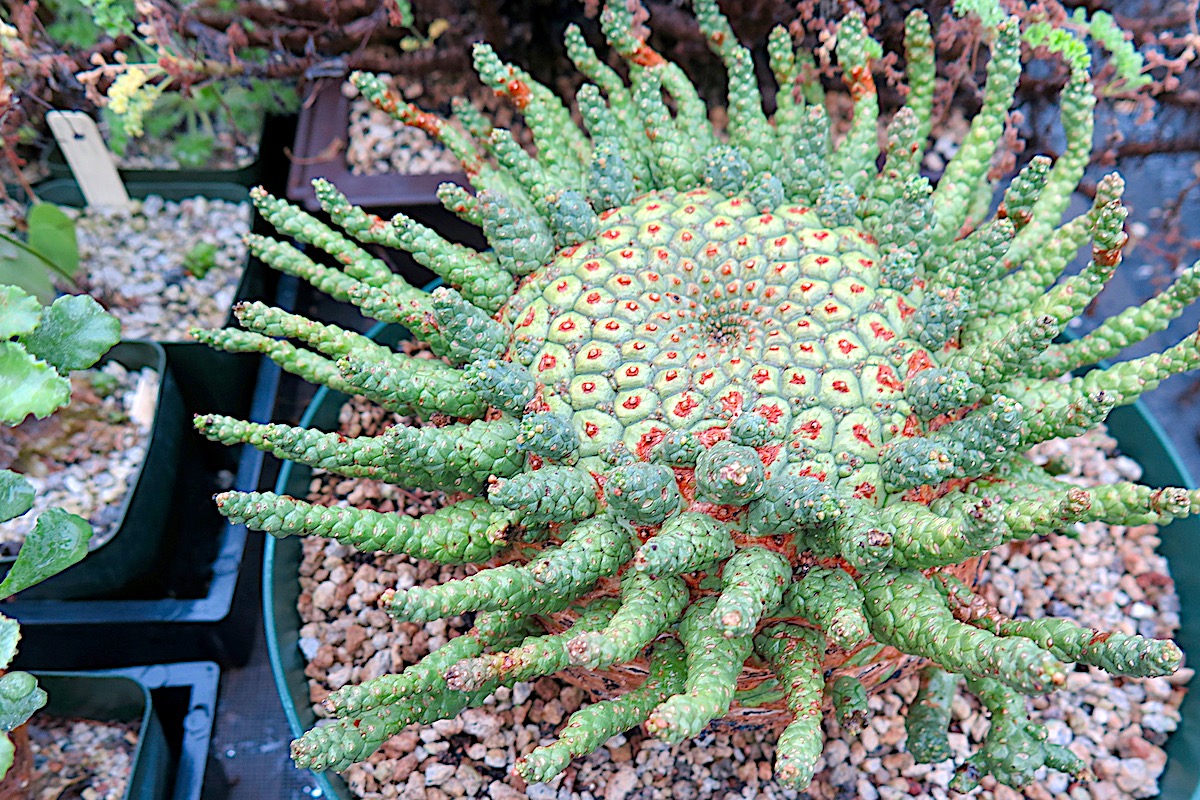
This plant is unidentified by its owner. A guess would be Euphorbia gorgonis or Euphorbia pugniformis, or a cross of at least one or both.
Tricky Identification of medusoids
"There are a few that are easy spots, although even the ones I think I can identify on sight have a couple of visual allies, and then there are the hybrids. By far the most common medusoid as previously mentioned is Euphorbia flanaganii, as it is one of the few that freely offsets new plantlets, usually at the ends of its tentacle-like limbs.
"However, Euphorbia woodii and Euphorbia superans look very similar in my opinion. Euphorbia caput-medusae also stands out due to its longer arms and unique blooms. And you can spot a Euphorbia esculenta and be at least fifty percent sure you are right, as it could also be Euphorbia inermis. So as always, we do the best we can.

Possibly Euphorbia inermis 'Huttonae'. I planted it at the San Diego Botanic Garden's "Undersea" exhibit in 2006, where it has been happily growing ever since. It is over three feet across and I've noticed it is in flower more often than not.

Examples of various medusoids at succulent plant shows, artistically presented in hand-built stoneware pottery. Plants like this deserve to be displayed singly as seen here.
Thick-fingered medusoids
"Euphorbia esculenta and Euphorbia inermis are both outstanding ornamental plants, with thick, finger-like tentacles emanating symmetrically around a central core. I just wish I could tell them apart. Over time, these plants can form an almost two-foot radius, and in the true species will never form offsets. That is why some of these plants are rare, not because they are hard to grow (in fact both of these are very tolerant of extreme temperatures and indifferent watering schedules), but because you must grow new ones from seed.

Euphorbia inermis or Euphorbia esculenta
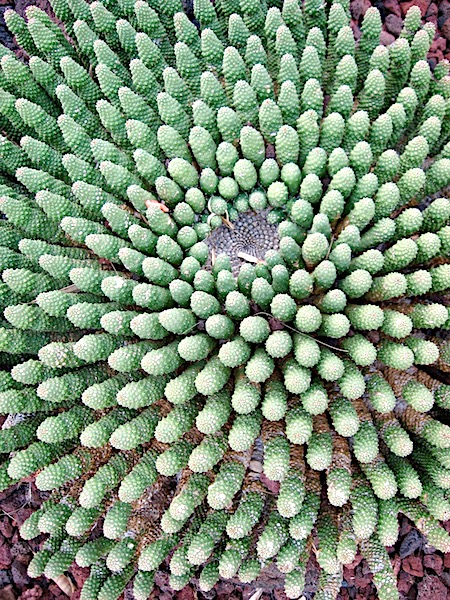
Probably Euphorbia esculenta
"If I may indulge you with a look into my book-making process for a moment, the aim with this and all of my books is to be both inspirational and informative---a "coffee table" book that also works as a reference guide. I really want to get all the names right, or as right as I can get them---that is my job, both as a nurseryman and author.
"Having said that... I take a lot of photos of plants in private collections, nurseries, botanic gardens - wherever I see them (thank goodness we live in the digital age and I can afford to indulge in my hobby). However, most of the plants I'm shooting are unidentified. I'll ask an owner if they can confirm what I think it is, but I often get shrugs. Either the tag was lost, or it never had one, or quite often the owner just wasn't into the names. So I'm spit-balling with best guesses quite often.
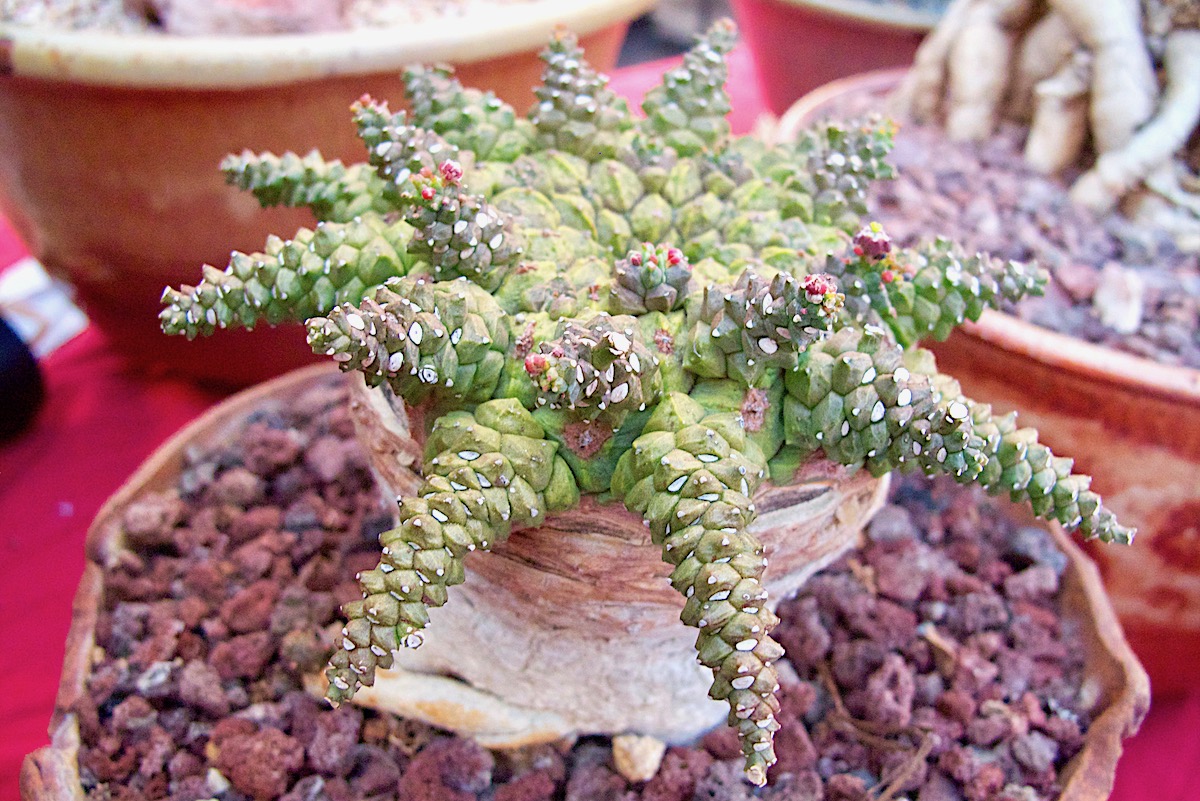
Euphorbia pugniformis

Euphorbia esculenta in flower. Photo and identification courtesy of Brian Kemble.
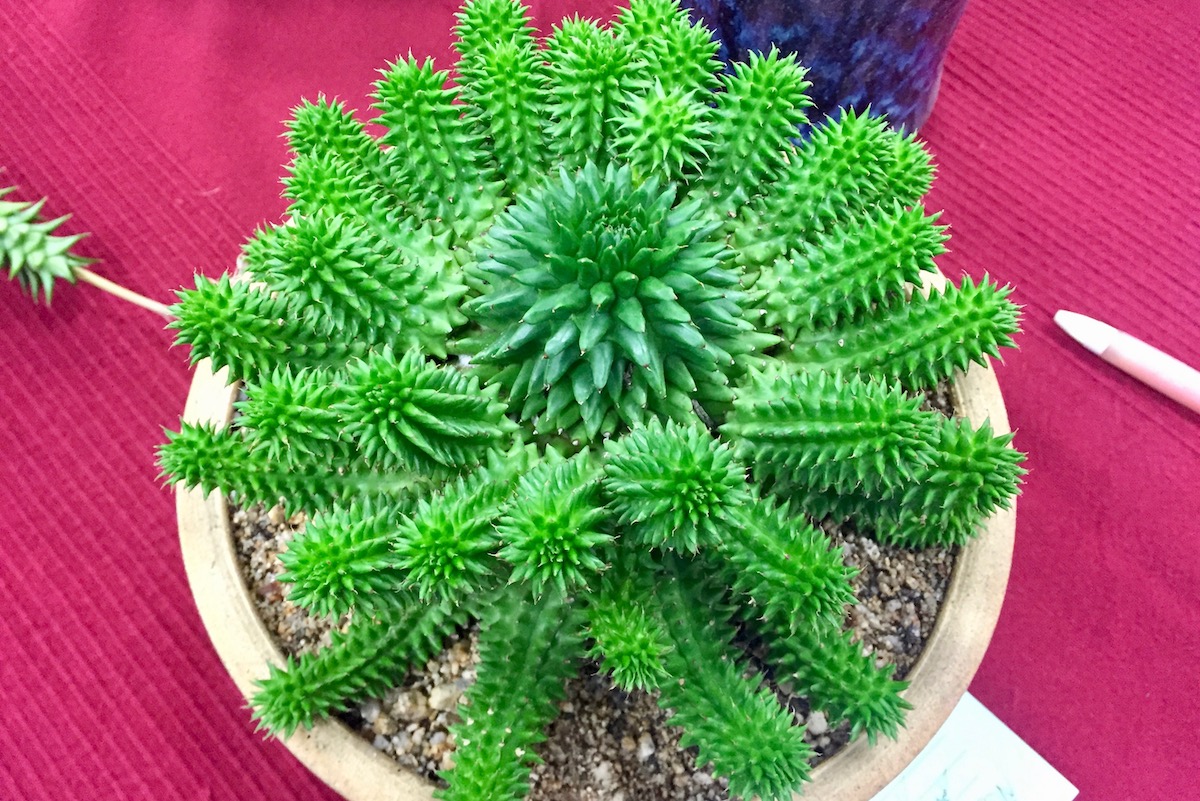
Euphorbia suzannae or hybrid
Crested Euphorbia flanaganii
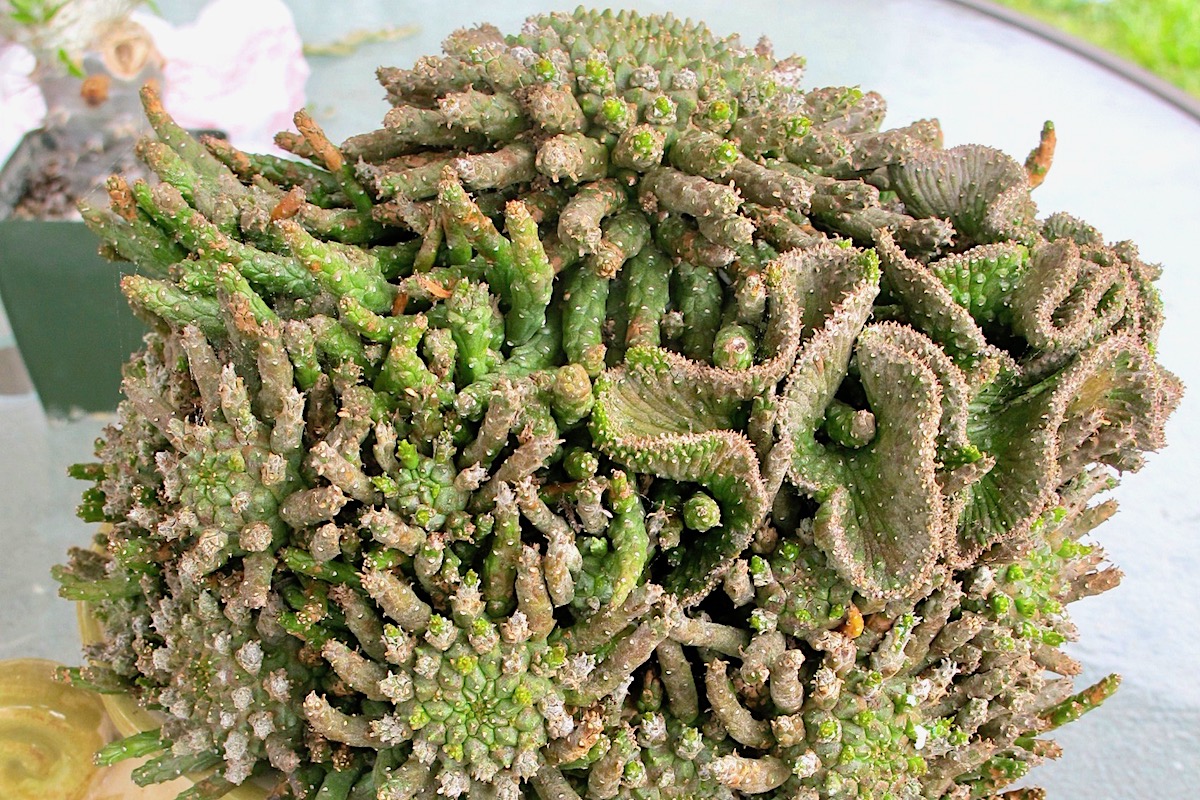
Euphorbia flanaganii offsets and crest
"Euphorbia flanaganii has a tremendous propensity to multiply. The specimen above is also exhibiting the beginnings of a crest.

Euphorbia flanaganii crest
Central crests of Euphorbia flanaganii have a tendency to contort into a smile or puckered grimace.
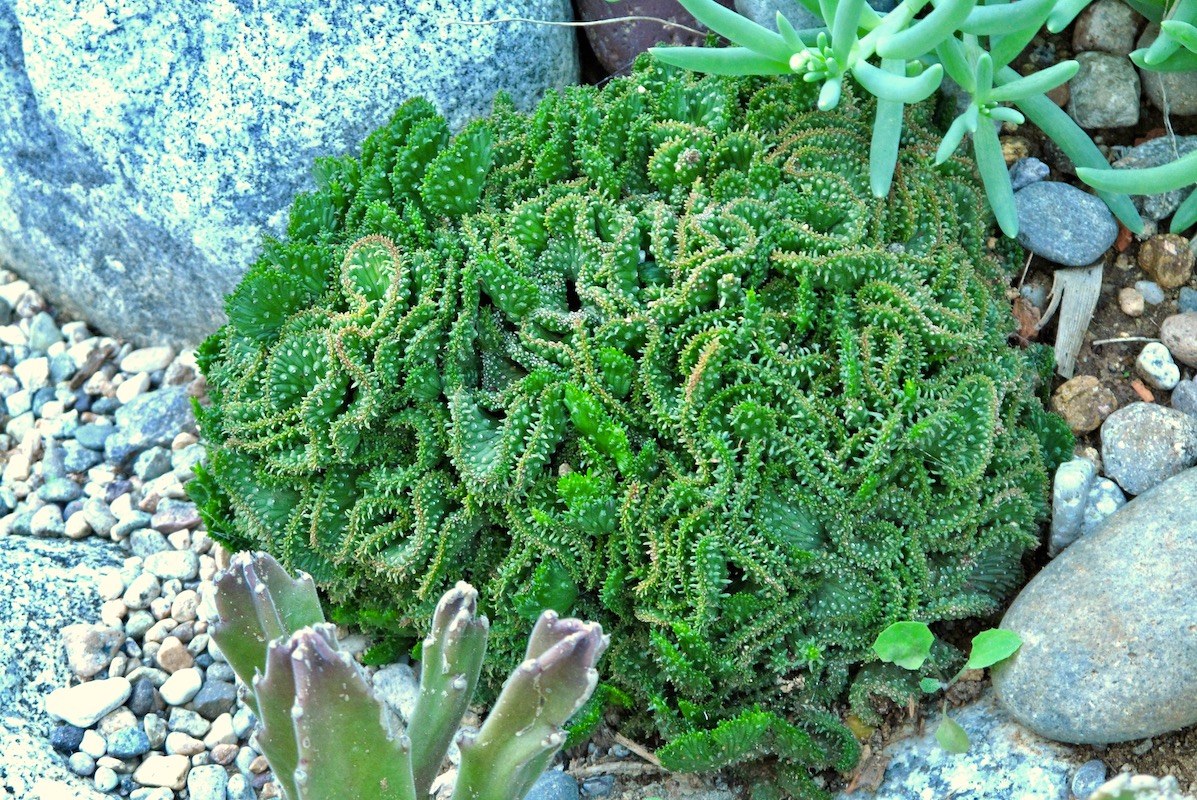
An "arm" crest of Euphorbia flanaganii.
Medusoid Euphorbias: Pests and Problems
"Medusoid euphorbias are prone to harboring scale insects that hide under their tentacles, which can be controlled with a systemic pesticide.

Powdery mildew on Euphorbia flanaganii
"Powdery mildew is an occasional unwelcome visitor to euphorbias, particularly the medusoids. It seems to appear on plants in more shady and wet winter conditions.
"One home remedy is Tinactin antifungal spray. Really. Expert grower Peter Walkowiak recommends applying a horticultural oil via a spray bottle, followed by a systemic pesticide. With both remedies, repeating the process after a few weeks is a good idea, along with getting the plants into a sunny and dry location.
More cool photos
"In case you haven't noticed, I tend to bombard the reader with images, and I really shouldn't be just throwing out scattershot multiple images of the same plant or plants just for the heck of it, as I've done below. I'm not sure if these will add to your knowledge of the medusoids. But getting back to the inspirational part, ain't they cool?
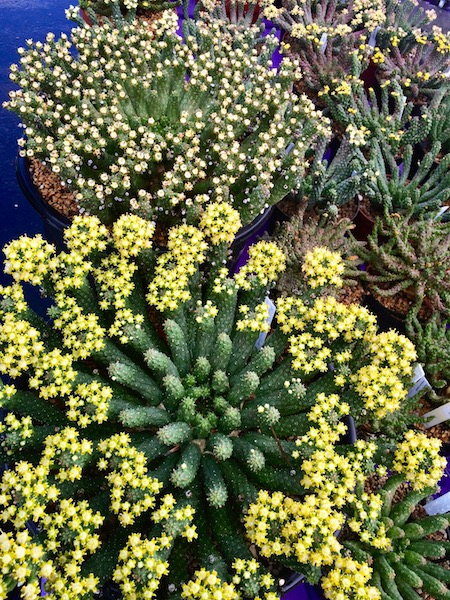
Peter Walkowiak is one of the premier grower of medusoid euphorbias (among many other succulents and cacti). This is just a slice of the plants he shows and sells.
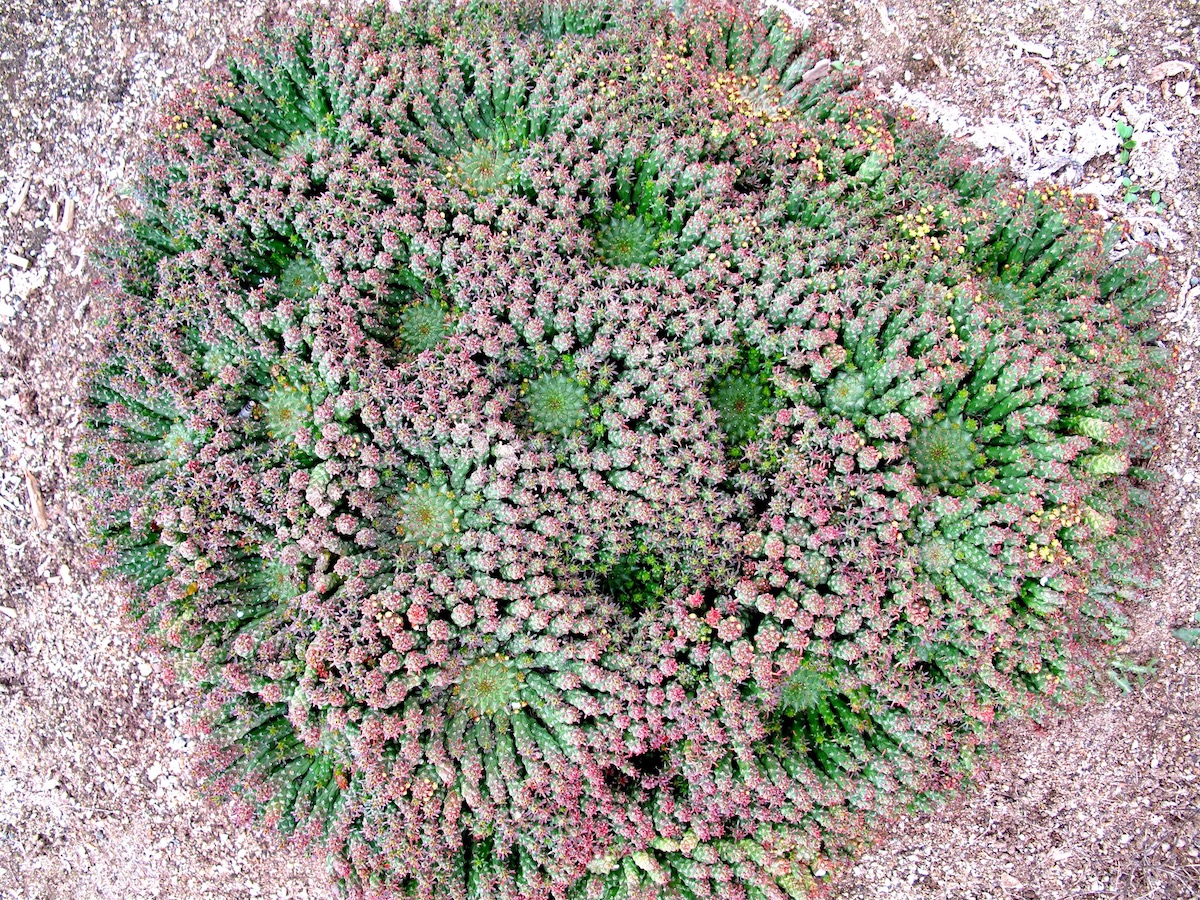
A mature, clustered example of Euphorbia woodii mimics an undersea anemone colony.
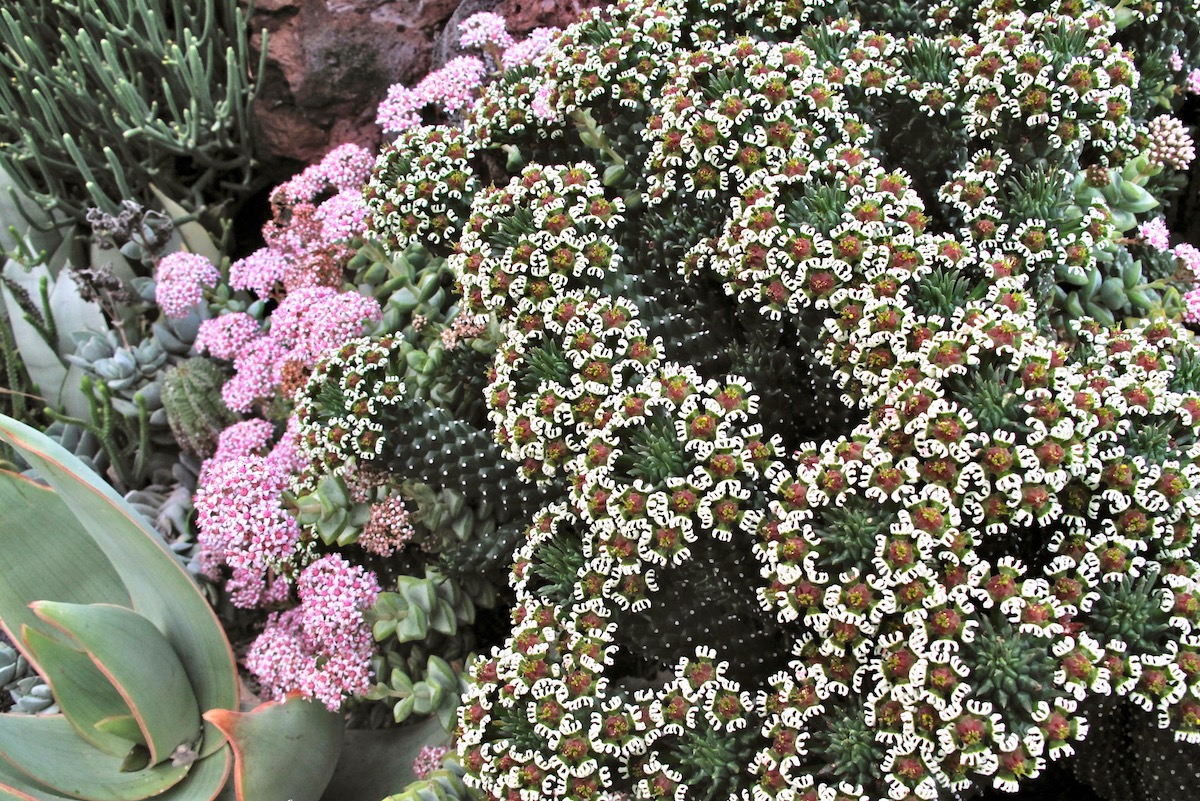
Euphorbia caput-medusae has a remarkable and long-lived flowering period.

An old clump of Euphorbia caput-medusae shows how it can migrate over time, in this case mimicking a den of snakes with heads poking up.
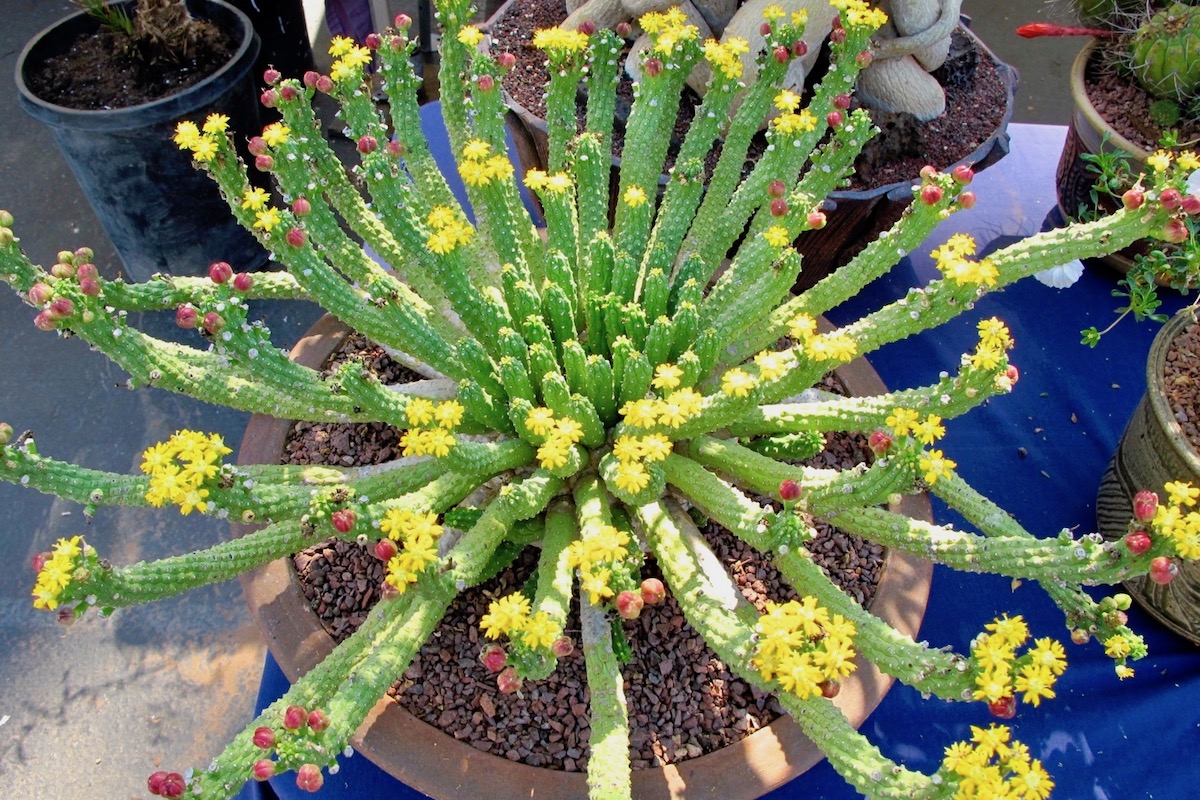
Medusoid euphorbia at a Cactus & Succulent show
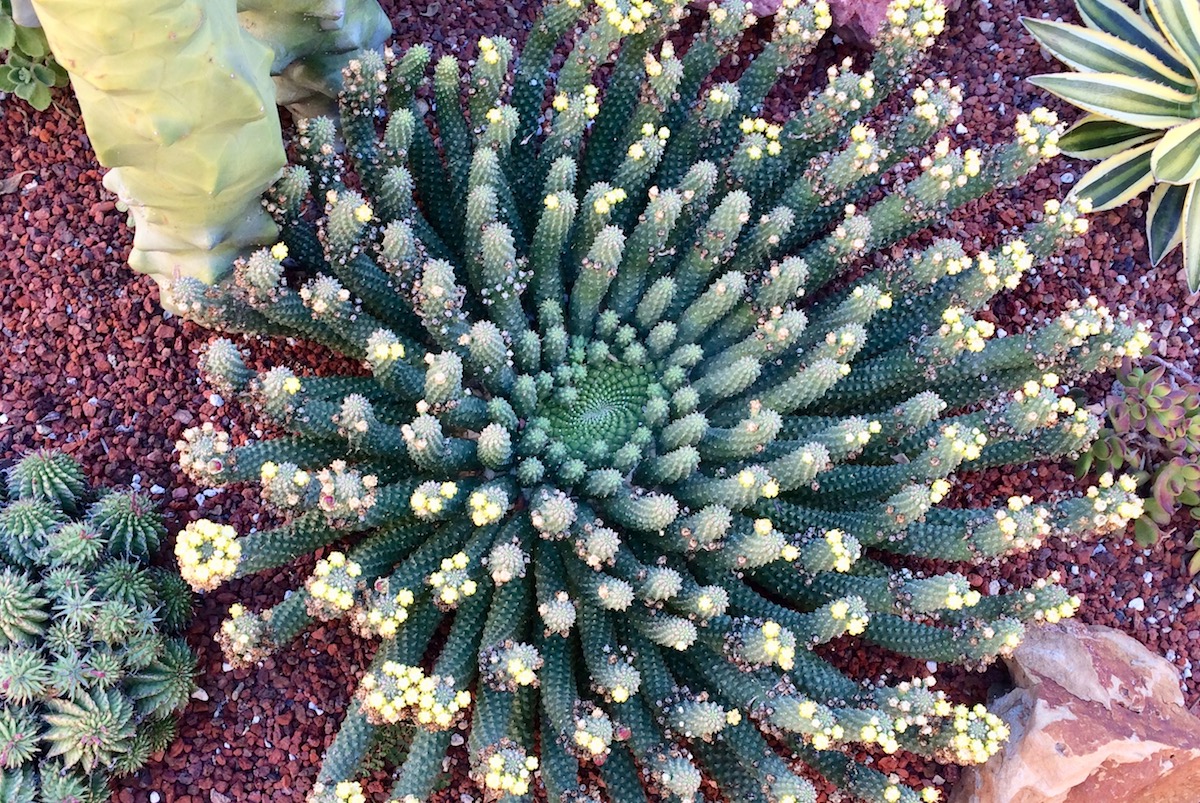
Euphorbia esculenta or Euphorbia intermis
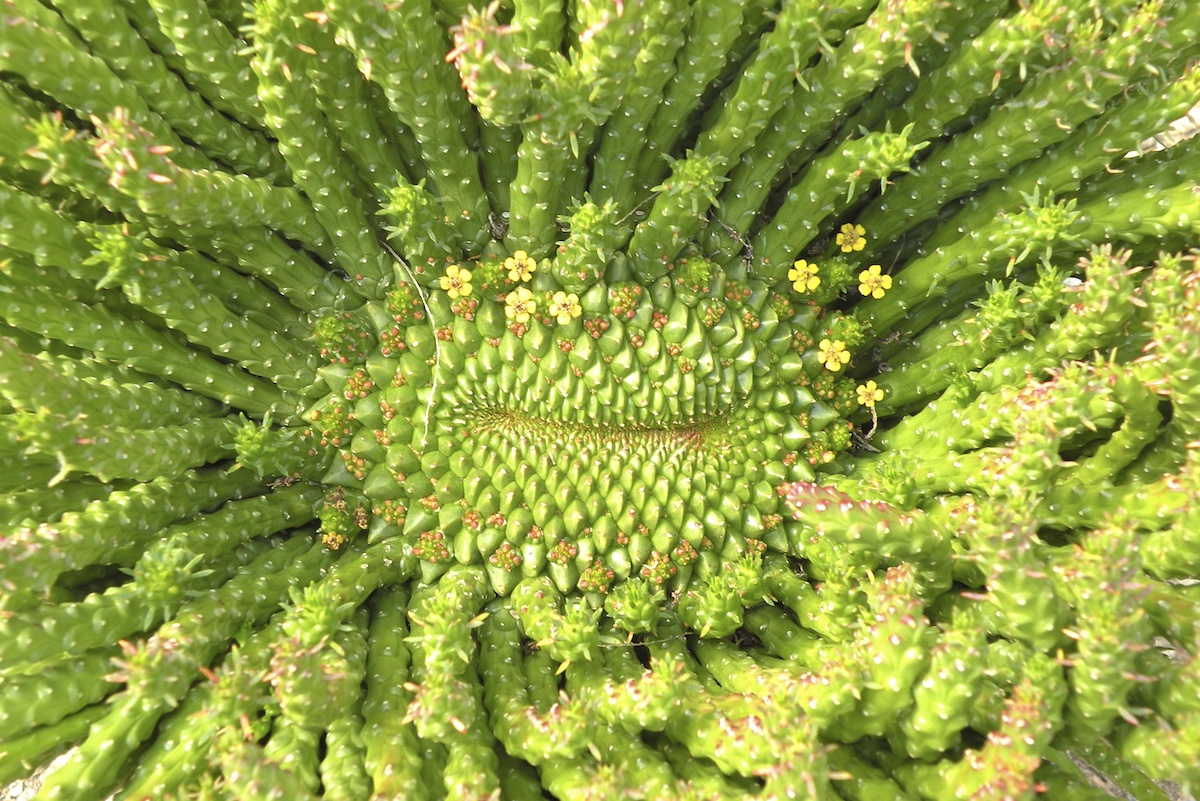
Euphorbia flanaganii crest
Order Jeff Moore's
"Spiny Succulents: Euphorbias, Cacti, and Other Sculptural Succulents".
See videos featuring Jeff Moore on my YouTube channel
Succulent Euphorbias: Photos, IDs, Garden Uses, Cautions
Euphorbia Uses, Photos and Cautions Native primarily to South Africa, succulent euphorbias are sculptural and collectible, but do be careful when handling them See All Succulent Types Aeonium Agaves Aloes Cactus Crassula Echeveria Euphorbias Ice Plants Kalanchoe Portulacaria Senecio About SUCCULENT EUPHORBIAS Euphorbia is a huge genus composed of plants with milky sap, including spurges and…



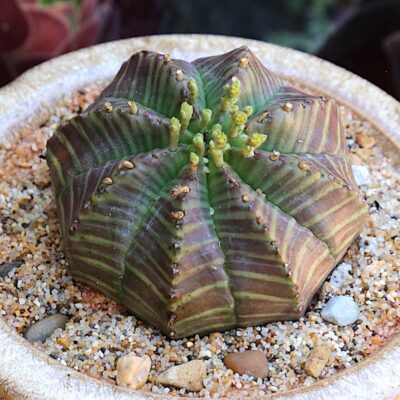
I love a person with a singular passion! (and killing bugs with foot spray 🙂
That was great fun! Thanks!
So is this what filling out the survey got us- fabulous writings and photos of my favorite plant to collect? And now I can even ID some of them! I’ll be asking Santa for this book! So happy I filled out the survey.
Fantastic !! Never knew such plants existed! Is there anywhere I can buy such a simple, small plant?
Hi Patsy, For Jeff Moore’s Solana Succulents and other specialty nurseries likely to carry them, see my list succulent specialty nurseries . If you’re not in Southern CA, look for medusa euphorbias at your closest Cactus & Succulent Society Show and Sale. Occasionally medusa euphorbias (especially E. flanaganii) are available from online nurseries. Your best bet is to let Mountain Crest Gardens know you’re interested: https://bit.ly/2WqmkWm
Thanks for running my article from the book, Debra. If you don’t mind a tiny bit of self-promotion here, that was just one small section of the larger euphorbia genus it takes a look at (along with cacti, pachypodiums, alluauadias, etc …. ). Some of the medusoids are difficult to find at any nursery (you might track the down at your local cactus club meeting or over the internet), but there a few that are commonly available and I try to keep a few types in stock at my nursery.
Hello! Great post. Full of very interesting and beneficial information. One constructive criticism, though. The title is somewhat misleading/inaccurate because the actual leaves are rather miniscule and often considered insignificant. The portions that are “snake-like” are the stems that grow off of the caudex.